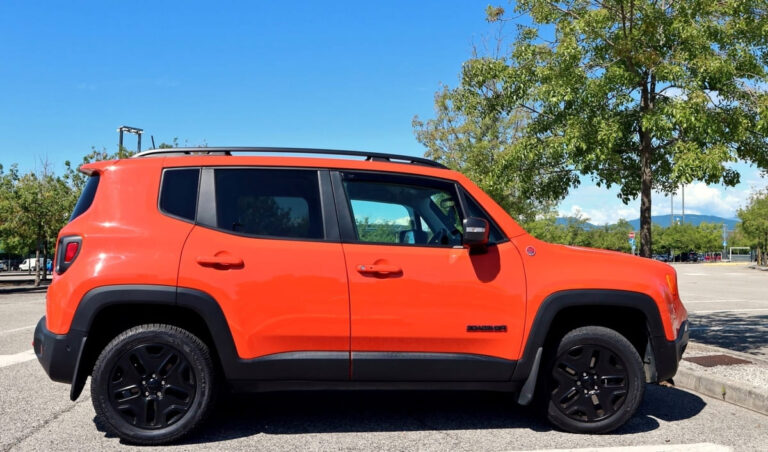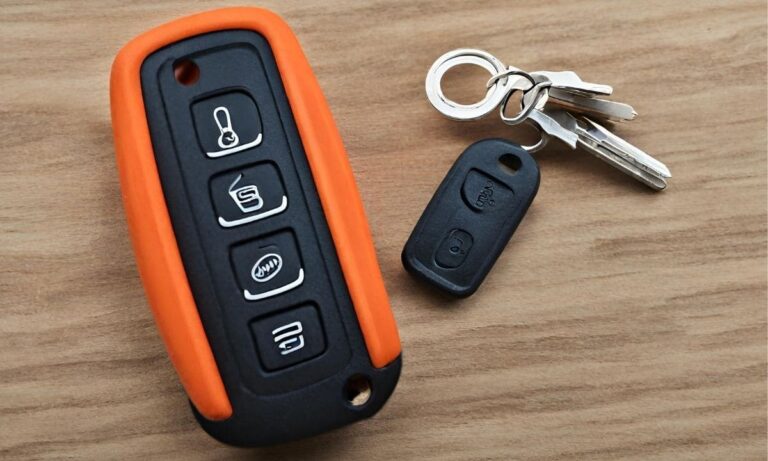Jeep Renegade Won’t Start: 10 Common Causes and Solutions

Finding your Jeep Renegade won’t start can be an incredibly frustrating situation. You turn the key and all you hear is a sad clicking noise or nothing at all. What could cause your Jeep to not start? There are a number of common issues that can prevent your Renegade’s engine from turning over and bringing the vehicle to life. Luckily, many no-start problems stem from straightforward causes like a dead battery or bad starter that can be addressed with some troubleshooting and repairs.
In this detailed guide, we’ll walk through the 10 most common causes when a Jeep Renegade won’t start and the steps you can take to get your vehicle back on the road. Whether the issue is battery-related, caused by a failed starter, or stemming from an engine sensor, we’ve got you covered on how to get to the root of the no-start problem. With the right information and willingness to get your hands a little dirty, you can diagnose and fix many starting issues in your own garage and save money on costly towing and repairs.
Let’s look at each of these common Jeep Renegade no-start causes and solutions:
Table of Contents
Dead or Dying Battery
The battery is essentially the lifeblood of your vehicle, providing the electrical current needed to power all of your Jeep’s electronics and start the engine. A weak or dead battery is the number one reason behind a no-start problem in the Renegade. Extreme hot or cold temperatures, electrical system issues, normal battery wear, and damage from accidents or vibration can cause a battery to die prematurely.
If the battery is more than 3-5 years old, has been drained by leaving interior lights on, or has weakened from cold weather, it may not have sufficient charge to engage the starter and crank the engine. Low voltage from a bad cell or short circuit in the battery can also prevent enough power from reaching the starter.
Testing the Battery
Luckily, diagnosing a dead battery is straightforward with some simple voltage tests. Use a multimeter to test voltage across the battery terminals. A fully charged battery should show 12.6 volts or higher. If your battery is reading below 12 volts, it likely doesn’t have sufficient charge to start your Jeep.
You can attempt jump starting the battery or charging it with a battery charger to get some life back into it. However, if it is more than 5 years old or voltage continues to run low, replacing the battery is the wisest long-term solution. When installing a new battery, make sure it matches the CCA (cold cranking amps) rating recommended for your Jeep’s engine size.
Failing Alternator
While the battery provides the initial jolt of electricity to start the engine, the alternator recharges the battery while you drive and ensures the electrical system continues operating. If the alternator is no longer charging properly, the battery can quickly drain resulting in a no-start situation.
The alternator converts mechanical energy from the engine into electrical current using an internal voltage regulator. This regulator monitors and maintains a charging voltage of 13 to 14 volts as engine speed changes. Signs of a failing alternator include:
- Dimming headlights at idle
- Battery not recharging while driving
- Battery warning light illuminated on dash
- Stalling or strange electronic issues while driving
Testing the Alternator
You’ll need a voltmeter to diagnose a potentially bad alternator. With the engine running at 1500 RPM, measure voltage between the battery positive and negative terminals.
A properly working alternator will show around 13.5 to 14.5 volts. If voltage is lower than 13 volts or not increasing with higher RPMs, the alternator is likely failing. Replacing the alternator and checking electrical connections will get your battery recharging and Jeep starting again.
Worn or Failing Starter
The starter is responsible for spinning the engine when you turn the key or press the start button. This small but powerful electric motor has to turn a cold engine fast enough to start the combustion process. Intense heat, physical strain, and age can cause starter components to wear out over time.
Common signs of a bad starter are a click noise with no crank, slow cranking, or a high-pitched whining sound. This typically means the starter motor gears, solenoid, or internal bearings are worn. Starter issues often first appear when cold starting the engine.
Fixing Starter Problems
- Start by checking all electrical connections to the starter. Clean loose or corroded wires and terminals.
- Listen for a click when trying to start. If no click at all, the issue may be with the ignition switch instead of the starter.
- With an assistant, tap the starter with a mallet while turning the key. If it temporarily engages, the starter may need rebuilt or replaced.
- For starters making grinding noises or very slow cranking, replacement is usually required. You can sometimes replace just the starter solenoid if that component has specifically failed.
Replacing a bad starter will typically get your Renegade starting normally again. The operation can be completed in an hour or two by moderately experienced DIYers. Just be sure to properly disconnect the battery before replacing the starter.
Faulty Ignition Switch
While not as common today, a bad ignition switch can also be the culprit behind a no-start. The ignition switch sends power to the vehicle’s starter when you turn the key. If this switch is damaged or worn internally, power won’t reach the starter to engage it.
Warning signs include not hearing any click when trying to start or being able to wiggle the key in the ignition. The switch may need tightening or internal components are worn out. Trying to start with a loose or faulty ignition switch can damage the starter as well.
Testing and Replacing the Ignition Switch
- Verify the switch is getting 12V power when turned to Start. No power indicates an open circuit.
- Check for voltage at the starter’s smaller wire terminal while a helper turns the switch. No voltage means power isn’t reaching the starter.
- Remove the switch and check for loose or burnt contacts and terminals. Clean or tighten connections.
- If the switch is visibly damaged or testing indicates internal failure, replacement of the ignition switch will be required.
While a bit tedious, changing an ignition switch is not challenging for DIYers. Take proper precautions to avoid damaging electrical components when removing the old switch.
Damaged Starter Relay
The starter relay is an electrically controlled switch that closes to send power from the battery to the starter when the key is turned. If this relay fails, you won’t hear the typical click sound when turning the key. The relay closes based on a low-current signal from the ignition switch. If contacts inside the relay stick open, no power reaches the starter.
Diagnosing a Bad Starter Relay
- Listen for a clicking sound when turning the key. No click indicates the relay may have failed.
- Use a voltmeter to check for 12V voltage at the relay coil terminal when starting. No power means an issue with the switch or fuses.
- Bypass the relay with a jumper wire. If the starter engages, the relay is likely faulty.
- Check for corroded or loose wiring connections at the relay. Clean and tighten as needed.
- If testing confirms a bad relay, replacement with an identical relay will have your Jeep starting again.
Starter relays are inexpensive and easy for DIYers to change. Proper diagnosis is key to determining if the no-start issue is caused by a bad relay versus other potential problems.
Immobilizer System Problems
Many modern vehicles including the Jeep Renegade come equipped with an immobilizer system as an anti-theft measure. The immobilizer prevents the engine computer from sending spark or fuel to start the engine until a valid key code is received from the chip in the ignition key.
If an error occurs in the key transponder, receiver, or immobilizer module, the system will block the engine from starting even with the correct key. Warning signs are a flashing security light and sometimes a “no-key” warning message in the instrument cluster.
Troubleshooting Immobilizer Issues
- Try starting with the spare key. If it works, the chip in your main key could be bad.
- Have the dealer or a locksmith scan for immobilizer system error codes. This can identify the specific failed component.
- Ensure the key and cylinder move freely. Broken parts inside can disrupt communication.
- Check key and receiver antenna connections for corrosion or damage.
In most cases, the dealership will be required to diagnose and replace any immobilizer system components that have failed and reprogram new parts. While not a simple DIY fix, addressing immobilizer problems will get your Renegade starting properly.
Fuel Pump Failure
The fuel pump pushes gasoline from the tank to the fuel injection system under high pressure. Without adequate fuel pressure, the engine won’t get the fuel needed to start. A no-start condition can sometimes point to a dying fuel pump.
Signs include turning over but not firing, stalling after starting, or no noise from the pump when turning the key. Debris clogging the pump, electrical issues, and worn parts can cause pump failure. Extremely low fuel level can also prevent the pump from working properly.
Testing and Replacing the Fuel Pump
- Start by ensuring you have at least 1/4 tank of fresh fuel. Low fuel level can cause no-start issues.
- Listen near the fuel tank when turning the key. You should hear a low hum or whine. No noise likely indicates pump failure.
- Use a fuel pressure gauge to test pump pressure. Pressure should be 50-60 psi with the key on and engine off.
- Check for blown fuses or a tripped fuel pump relay. Replace fuses or reset relay if needed.
- If the pump is noisy but weak pressure, inspect and replace the strainer filter.
- For no noise or pressure, the entire pump assembly will need replacement. This requires dropping the fuel tank for access.
While not hugely complex, fuel pump replacement can take 3-4 hours for inexperienced DIY mechanics. Having a shop replace the pump tends to be more cost-effective unless you have automotive experience.
Clogged Fuel Filter
Another fuel-related issue that can cause a no-start is a severely clogged fuel filter. This small filter is located along the fuel line and screens out dirt, rust, and sediment from gas before it reaches injectors.
Over time, debris builds up and restricts fuel flow through the filter. Restricted fuel flow leads to fuel starvation and difficulty starting the engine. The same lack of fuel pressure discussed above is the result.
Clearing a Plugged Fuel Filter
- Verify you have over 1/4 tank of fresh gasoline without contamination or added winterizer.
- With adequate fuel level, attempt starting for 10 seconds maximum. Don’t keep cranking or you may burn out the starter.
- Check for power at the fuel pump. If on, replace the fuel filter.
- Disconnect filter lines and drain any gas from the filter bowl to inspect for debris.
- A partially clogged filter may be cleared by gently blowing compressed air through the inlet side.
- If filter is clearly contaminated or air doesn’t unclog it, install a new fuel filter. Use protective gloves when handling old diesel filters.
Fuel filters are inexpensive maintenance items DIYers can easily replace themselves. Just be sure to lubricate the filter gasket and tighten all fittings during installation to prevent leaks.
Faulty Crankshaft Position Sensor
The crankshaft position sensor monitors the location and speed of the engine’s crankshaft. It sends a signal to the computer so it can properly time ignition and fuel injection. If this sensor is damaged or reading incorrectly, the computer won’t allow the engine to start.
Symptoms of a bad crank sensor include:
- Long cranking time before starting
- Intermittent stalling shortly after starting
- Check engine light for misfire or crankshaft codes
- Rough idle and poor acceleration
Testing and Replacing the Sensor
- Inspect sensor electrical harness for damage. Ensure connections are clean and tight.
- Use a multimeter to check sensor resistance. Compare to spec range in repair manual. Out of spec indicates failure.
- Scraping the sensor face gently may fix issues caused by accumulated dirt on the sensor pole.
- If cleaning or resistance testing points to a bad sensor, replacement of the crankshaft position sensor will be required.
Crank sensors can fail slowly or all at once. Gradual degradation causes inconsistent starting and running issues. Complete failure results in a sudden no-start. DIY replacement takes about an hour.
Bad Camshaft Position Sensor
Along with the crankshaft, the camshaft position sensor provides vital timing signals for electronically controlled engines. It monitors the camshaft speed and alignment so the computer knows piston position for ignition and fuel timing.
Cam sensor failure typically causes startability and idle issues. Warning signs include:
- Difficult cold starts but normal starting when warm
- Stalling at idle with an eventual no-start
- Check engine light with camshaft position codes
Diagnosing and Changing the Cam Sensor
- Carefully inspect sensor connectors for moisture, corrosion, and damage. Electrical issues can mimic sensor failure.
- Measure sensor resistance with a multimeter as outlined in the service manual. Compare to specified range.
- Remove sensor and check tip for signs of wear or debris buildup. Clean with electrical cleaner and replace if excessively worn.
- If testing confirms sensor failure, install a new camshaft position sensor of the correct type.
Cam sensors are only about $25-50 and take just 30 minutes to change yourself. Proper testing should be done to verify the cam sensor is actually faulty before replacing.
Conclusion
Difficulty starting your Jeep Renegade can quickly go from aggravating to downright infuriating. While a no-start condition may seem daunting, in most cases the culprit is one of these 10 common issues outlined here. With methodical diagnosis and testing, you can identify the specific cause and take action to get your Renegade back on the road. Pay attention as the vehicle behaves when trying to start. The symptoms and troubleshooting steps provided here will lead you to the root of the starting problem.
In many cases, starter, battery, or fuel system repairs can be completed yourself with some mechanical know-how. For more complex issues like failed anti-theft systems or bad sensors, trusted professional technicians have the experience and advanced tools to get your Jeep running right again. Patience and persistence will be rewarded as you breathe new life into your dormant Renegade.
Does another no-start cause come to mind? Let us know in the comments if you’ve encountered a Jeep starting issue we didn’t cover, along with how you solved it. With the help of other owners’ experiences, we can expand this guide to help more Renegade drivers get back on the road.







